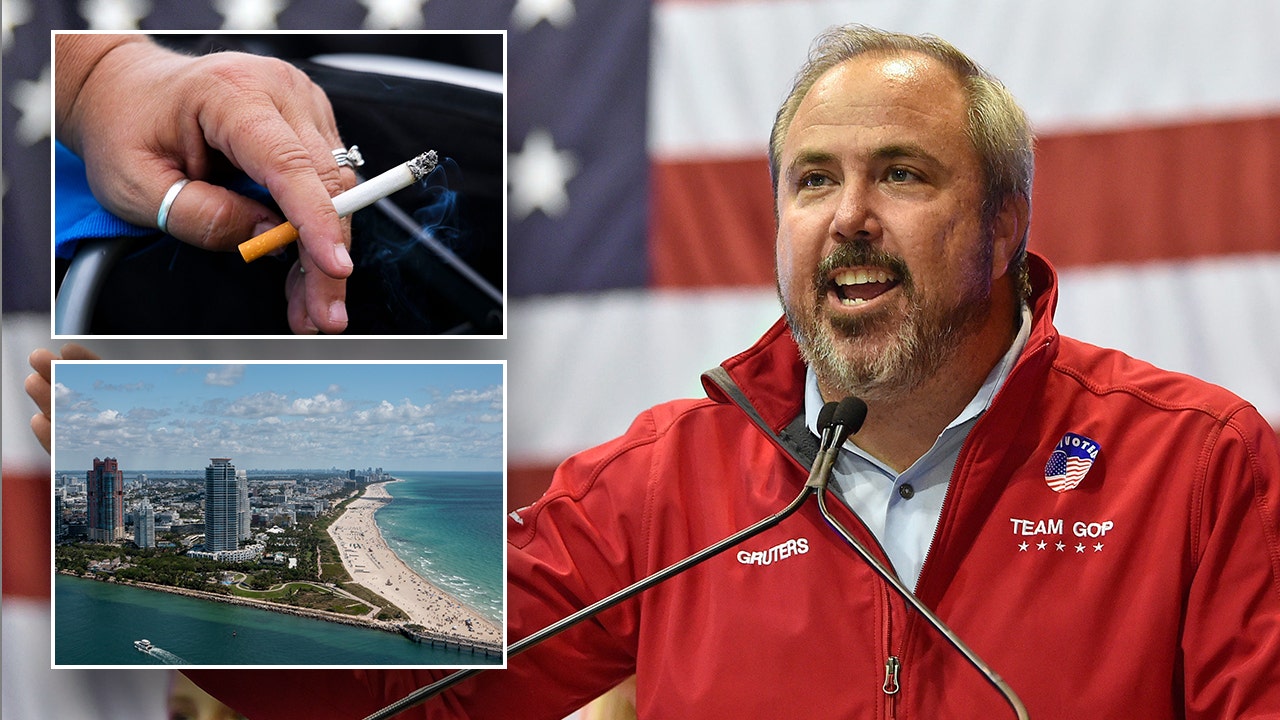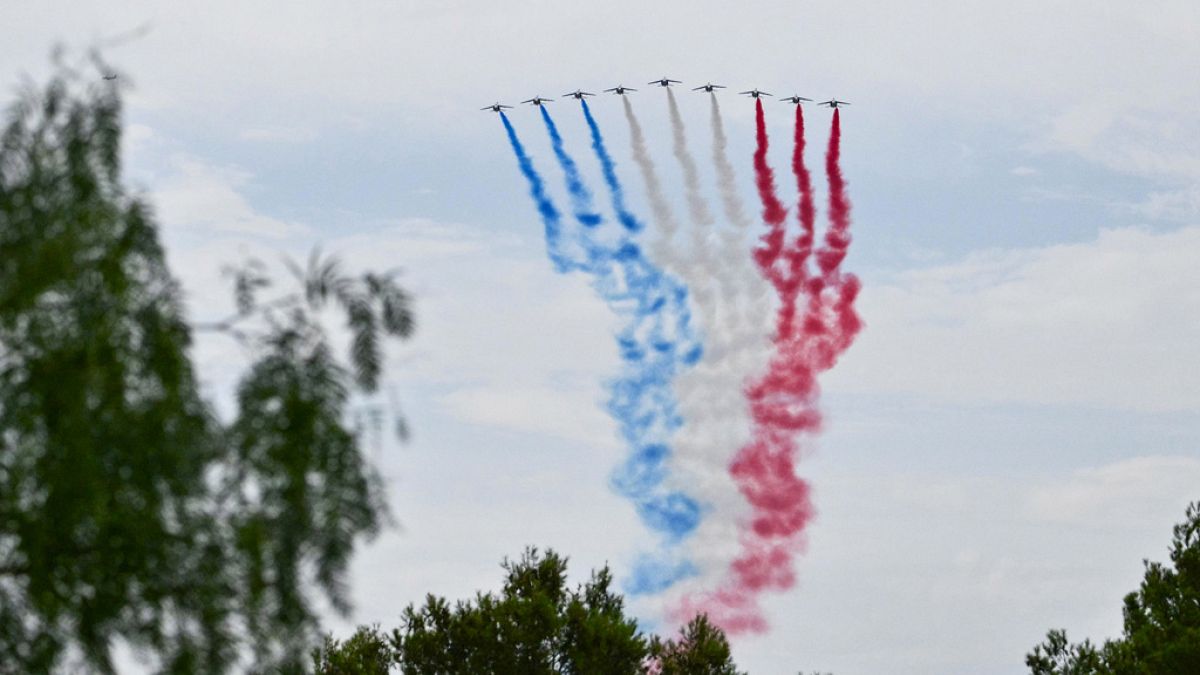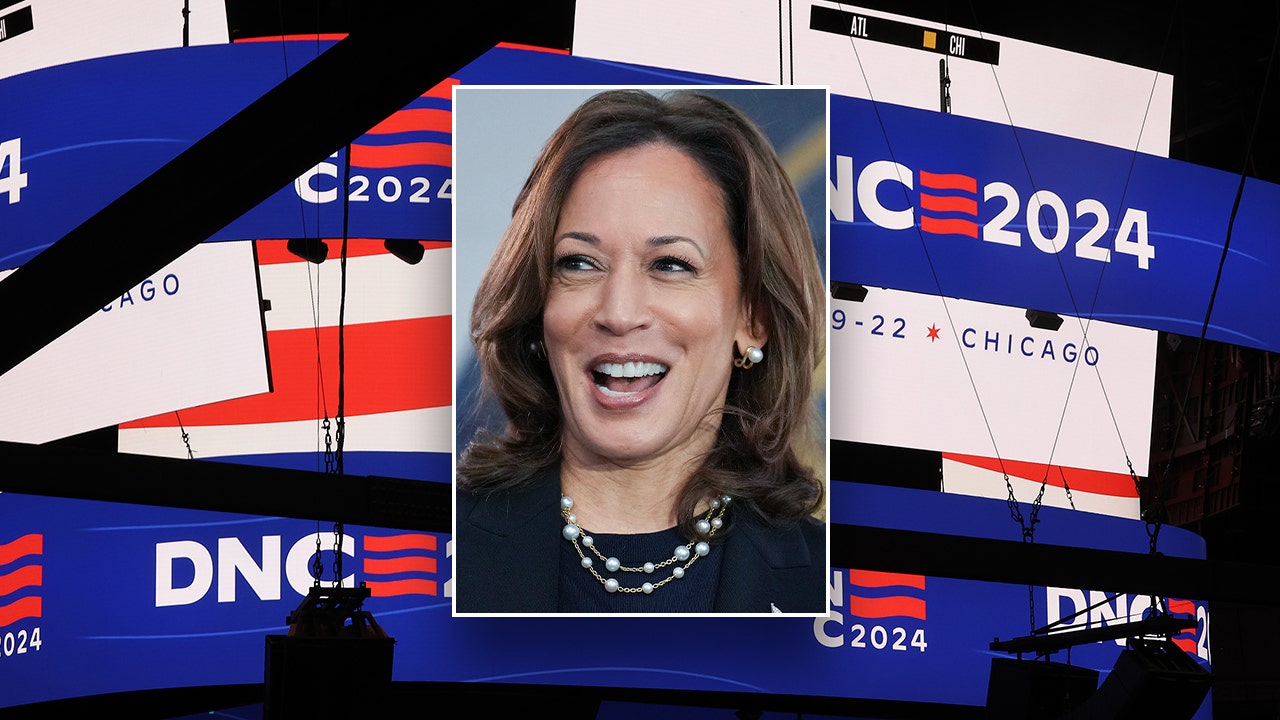Lifestyle
How one pop band is trying to turn concertgoers into climate activists

AJR fans at Denver’s Ball Arena perform the wave on June 20, 2024.
Chloe Veltman/NPR
hide caption
toggle caption
Chloe Veltman/NPR
At Ball Arena in Denver, thousands of fans of the multi-platinum-selling indie pop group AJR do the wave. The vast, coordinated ripple as the concertgoers throw their arms up instantly unites the room.
It’s this type of mass, coordinated energy that AJR bassist and climate activist Adam Met wants to harness.
“Can we actually capture that power in the concert space and make use of it to get people to do something more?” said Met, who also runs the climate change research and advocacy non-profit Planet Reimagined.

Ryan Met, left, Jack Met, center, and Adam Met, right, of AJR at the 2019 Lollapalooza Festival in Chicago.
Amy Harris/Invision/AP
hide caption
toggle caption
Amy Harris/Invision/AP
AJR has been filling arenas across the country this summer on its Maybe Man tour with quirky-existential hits like “Bang!” “Burn the House Down” and “World’s Smallest Violin.”
Along the way, the band has also been collaborating with local nonprofits in each city to inspire concertgoers to take local, policy-based action to help reduce the impacts of human-caused climate change — right there in the arena.
Getting fans to do something more
According to data shared by Planet Reimagined and verified by its local nonprofit partners, concertgoers at AJR’s two Salt Lake City shows sent 625 letters and 77 handwritten postcards to Utah legislators calling on them to decrease the amount of water being diverted from the Great Salt Lake.

“In Phoenix, they sent more than 1,000 letters to the city council calling on them to recognize extreme heat as a climate emergency,” Met said. “In Chicago, 200 fans sent letters to Illinois legislators urging them to pass the Illinois clean jobs platform, which supports investments in building transportation and the grid.”
Those seem like tiny numbers. But they make an impact.
“So if 30, 40 or 50 people are in a live setting and they’re being encouraged to support a particular nonprofit’s agenda, and they all send emails at the same time, that is definitely going to get the attention of lawmakers because that’s unusual,” said Bradford Fitch, president and CEO of the non-partisan Congressional Management Foundation, which has done research on outreach to lawmakers. “That doesn’t happen very frequently.”
Artists for climate activism
A growing number of artists are working to educate ticket-buyers at concerts about human-driven climate change as part of a broader environmental movement in the music industry.
“We’re seeing more and more artists and venues and festival teams increasing their ambitions around sustainability overall,” said Lucy August-Perna, global head of sustainability for music events promoter and venue operator Live Nation.
Artists like Billie Eilish have discussed the issue on stage.
“Most of this show is being powered by solar right now,” Eilish said at last year’s Lollapalooza Festival in Chicago. “We really, really need to do a better job of protecting this [expletive] planet.”
Many other performers, like Dave Matthews Band, The 1975 and My Morning Jacket, are also inviting activist groups to share information at concert venues.
“We have tables where fans can learn about local climate organizations and basically just connect about climate and sustainability,” said Maggie Baird, who oversees Eilish’s climate and sustainability efforts. (She’s also the rock star’s mom.) “I think it’s really important that artists use their platforms. They have a unique gift, and they also have a unique responsibility.”
“Most of our partner tours have fan actions and things that they can do on site,” said Lara Seaver, director of touring and projects at Reverb, which works with touring artists such as Eilish and AJR on implementing their environmental efforts.
Seaver said what sets AJR’s engagement work apart to a degree is its consistency and depth. “In every single market, we have something very local and meaningful and impactful happening,” she said.
Assessing the impact
According to Planet Reimagined, around 12,000 audience members participated in climate-related civic actions during AJR’s tour, such as signing petitions, sending letters, leaving voicemails, registering to vote, making donations and volunteering. An additional 10,500 scanned QR codes and signed up for emails to learn more about an issue.
AJR’s Met said he felt confident they would be responsive: Ticket buyers for concerts and festivals featuring artists like Taylor Swift, Beyonce, Dave Matthews Band and many more were polled in the recent Planet Reimagined Amplify: How To Build A Fan Based Climate Movement study, undertaken in collaboration with Live Nation. The majority of respondents said they’d be open to not just learning about climate change, but also would be open to take climate-related actions at these events.
Met said the findings also highlight what artists should do to be effective at each stop on a tour, such as being relevant to the local community. “If it’s affecting them and their community personally, they’re so much more likely to take action,” Met said.
Met said the research also shows artists need to model those actions themselves. “Fans have this deep connection to artists,” Met said. “So there is so much more impact on fans if the artist says, ‘Will you join me in doing this?’ As opposed to, ‘Will you do this?’”
Putting research into practice

Chelsea Alexander and Bobbie Mooney of 350 Colorado were on site at an AJR concert in Denver to engage fans in supporting their phase-out fracking campaign
Chloe Veltman/NPR
hide caption
toggle caption
Chloe Veltman/NPR
In Denver, fans were able to use their phones to scan a QR code displayed on screen to support a local campaign aimed at getting an initiative on the 2026 Colorado state ballot to phase out new permits for fracking by 2030. A contentious issue in Colorado, the process is used to extract oil and gas. It generates wastewater and emits toxic pollutants and methane, which is a major source of planet-warming pollution. But it’s big business.
Meanwhile, out on the concourse, representatives from 350 Colorado, the local climate change nonprofit that’s running the campaign, chatted up fans.
350 Colorado’s Chelsea Alexander told AJR fan Robin Roston that the QR code, “takes you to a form that takes about 20 seconds to complete.”
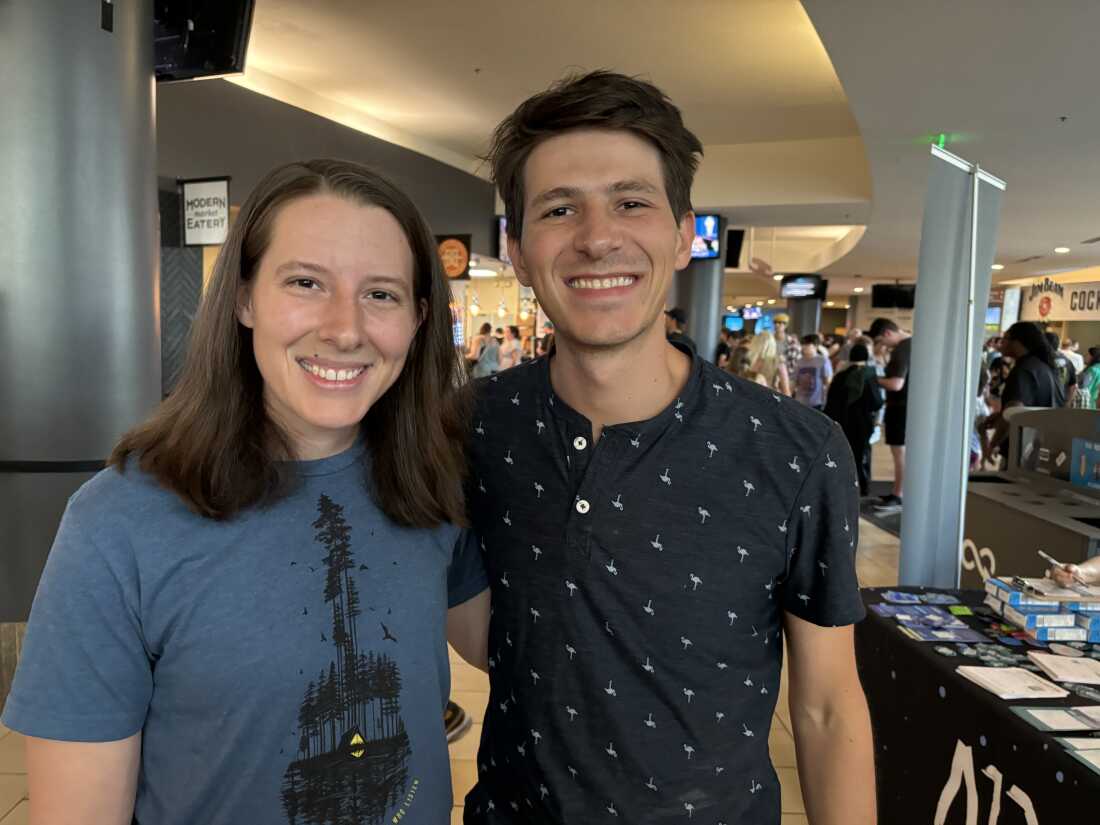
AJR concertgoers Robin Roston and Ben Roston
Chloe Veltman/NPR
hide caption
toggle caption
Chloe Veltman/NPR
“I think it’s a good way to get boots on the ground, chatting with real people who are here to enjoy music, and connecting that with helping the environment,” Roston said.
Small steps, big potential
According to 350 Colorado, 179 people took action over the course of AJR’s two performances in support of the phase-out fracking campaign. At least 125,000 physical signatures will be needed to get the initiative on the ballot in 2026.
But 350 Colorado representative Bobbie Mooney said every bit helps.
“We often think in terms of a ladder of engagement, where we can invite someone to take a small action and give them a sense of empowerment that they’re a part of the solution,” Mooney said. “And then we can invite them to take another, maybe greater action. They can join a committee, they can become a part of advocating for a particular bill in our legislature.”

Because of the collective energy they create, big, live gatherings such as concerts and sporting events provide a particularly powerful setting to get people on that ladder.
“The fact that everyone around us is doing something makes us dramatically more likely to do it ourselves,” said Cindy McPherson Frantz, a professor of psychology and environmental studies at Oberlin College.
But Frantz said it’s not easy for fans to sustain enthusiasm for such things after coming down off that big event high.
“You could get all excited about calling your senator or voting at the rock concert,” she said. “And then you go home, a week goes by or a month goes by, and you forgot all about it and you’re busy and whatever. And then it just completely evaporates.”
Frantz said simply getting fans to talk about climate change at a concert is a win, though. “The power of bringing people together and giving them the sense of, ‘I am not alone, I’m not the only person scared about this, I’m not the only person working on this problem,’ is a huge antidote to the hopelessness and the helplessness that comes from being isolated.”

Lifestyle
Skai Jackson Domestic Violence Case Rejected For Lack Of Evidence
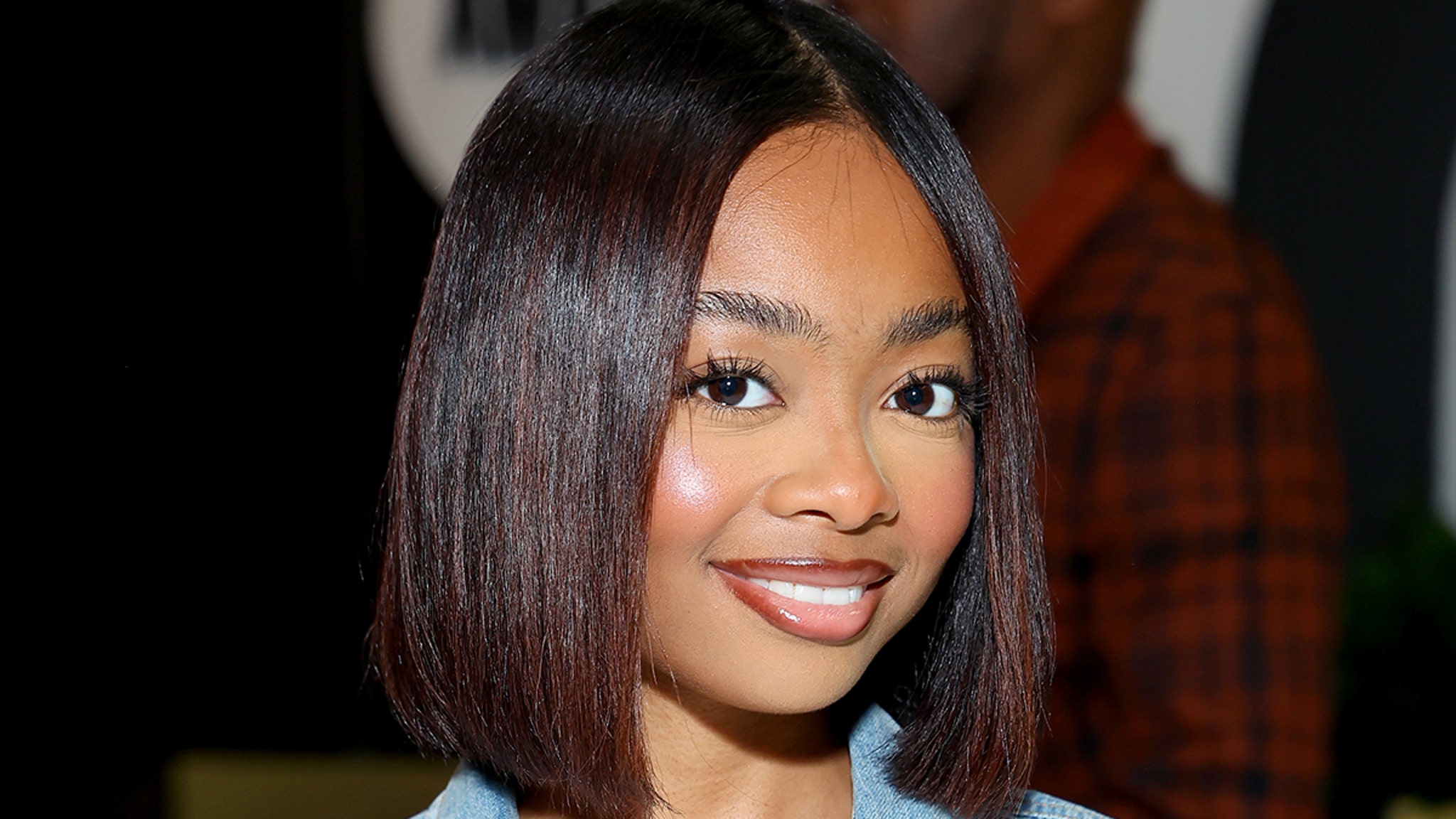
Skai Jackson won’t face charges after her domestic battery arrest after fighting with her BF … ’cause prosecutors say there just isn’t enough evidence to bring the case to trial.
The L.A. County District Attorney’s Office tells TMZ … they’re declining to file charges because Skai has no criminal history, the alleged victim lacks injuries, and he’s refused to cooperate with prosecutors.

TMZ broke the story of the Disney Channel alum’s arrest … after cops say she was spotted getting into it with her BF last week at Universal CityWalk.
We’re told officers responded to the scene at CityWalk and security detained the couple after video showed Skai pushing her BF.
Cops say Skai and her BF both denied anything got physical — despite the video — and told officers they were happily engaged and expecting a baby.
Skai was still arrested for misdemeanor domestic battery, but she was released just a few hours later.
Good luck, kids.
Lifestyle
'The Sixth Sense' and a career of plot twists : Consider This from NPR

1999 Haley Joel Osment And Bruce Willis Star In “The Sixth Sense.” (Photo By Getty Images)
Getty Images/Getty Images
hide caption
toggle caption
Getty Images/Getty Images

1999 Haley Joel Osment And Bruce Willis Star In “The Sixth Sense.” (Photo By Getty Images)
Getty Images/Getty Images
Twenty-five years ago this month, one film, and one filmmaker, became synonymous with the big plot twist.
Now, if you haven’t seen The Sixth Sense, we won’t ruin it for you, but it’s no spoiler to say that the film became a phenomenon, and its director, M. Night Shyamalan, an overnight sensation.
Brian Hiatt, a senior writer for Rolling Stone says Shyamalan’s career has had twists and turns to rival his movies.
“You know, in the ’90s, it was a great time to be a director, it was a great time to go from almost nothing to superstar,” Hiatt told NPR.
“The faster the rise or the bigger the rise, the sort of harder the fall.”
You’re reading the Consider This newsletter, which unpacks one major news story each day. Subscribe here to get it delivered to your inbox, and listen to more from the Consider This podcast.
The public reaction.
Shyamalan’s rise was fast AND big.
The Sixth Sense became the second highest grossing film of 1999, and was nominated for six Oscars, including Best Picture. By 2002, Newsweek touted him on its cover as “The Next Spielberg.”
But in 2004, with his gothic thriller The Village, things began to go wrong.
“Backlashes don’t happen all at once. They kind of actually can happen in slow motion. And that was the first hint that a backlash was coming,” Hiatt said.
“It was 2004. It had a pretty mixed reception. The promotion of the film was was a little bit overdone at the time. And a lot of people thought the twist was just flat out dumb.”
His next films were not only critically panned, but also flopped at the box office. By the time he made the almost-universally-hated After Earth in 2013, many moviegoers decided that Shyamalan was a sham.
But Hiatt says Shyamalan made a comeback by betting on himself. In 2015 he released The Visit, which he made with a minimal budget and partly financed himself — and earned some of his best reviews in over a decade.
That stripped-down approach has helped fuel a run of recent successes. And Shyamalan hopes for another hit starting this weekend with his latest thriller, Trap.
Propelling from success.
Starring opposite Bruce Willis in The Sixth Sense was young Haley Joel Osment. He was 11 when the film came out — and he grew up in the shadow of the its success, like filmmaker M. Night Shyamalan.
“It makes me very happy that 25 years later he’s gotten an incredible run of movies,” Osment told Consider This host Scott Detrow.
Like his director, Osment never really stopped working. Dramas, comedies, fantasies, voiceovers, TV, movies … he’s now 36 years old and still busy.
But how did he contend such a huge splash, so early on?
“As an actor, it can be an opportunity [to make such an impression], because you can find all these ways to camouflage yourself. One of the most gratifying things you can have happen as an actor is people go like, ‘Oh, I didn’t realize that was you’ in something, which I think actors get a kick out of,” Osment told NPR.
“So I’m 36 now and I feel like, all these new opportunities for roles are opening up to me because of my age. I was able to play so many different types of roles, an unusually diverse group of roles, I was very fortunate to have when I was a kid,” he added.
“And now, I’ve never been afraid of getting older, because it’s just it broadens the horizons of the different types of characters you can play.”
This episode was produced by Marc Rivers. It was edited by Tinbete Ermyas and Patrick Jarenwattananon. Our executive producer is Sami Yenigun.
Lifestyle
American prep clothing finally finds its edge
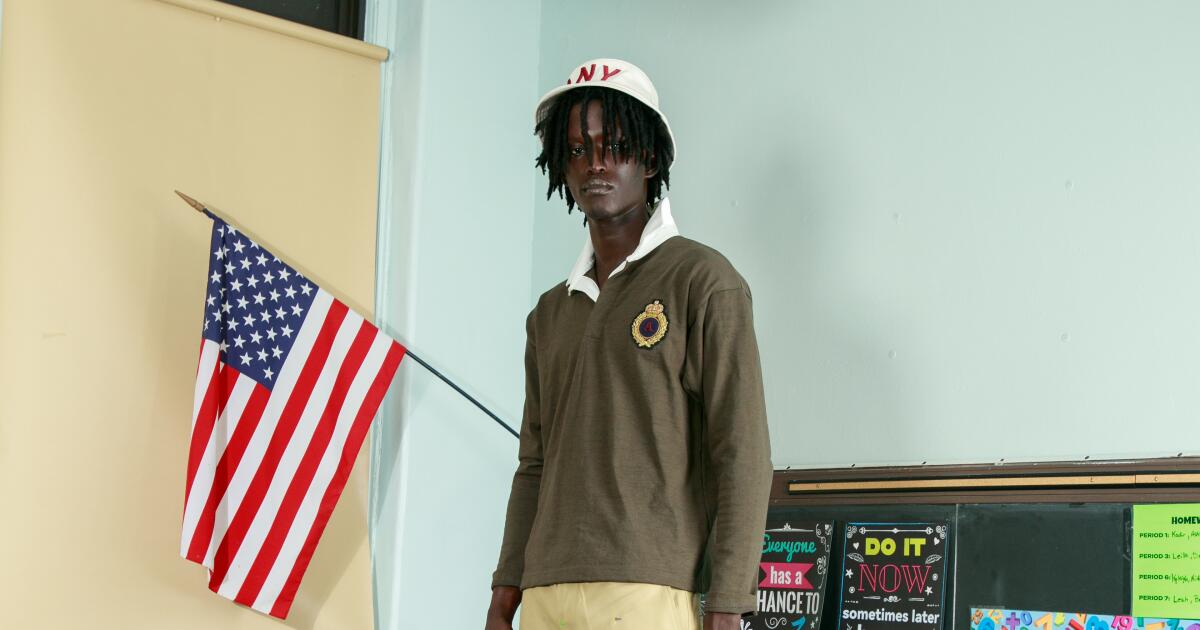
Hella Academy by Chris Echevarria Pennant Chino in khaki, Field Ready Rugby in hunter green, Schoolboy Blazer in navy, Weekender Bucket Hat in shell, Ellis Penny Loafer in chocolate, Vibram 1757 Lug Sole.
When we talk about “traditional American menswear,” rarely do we ask what that actually means. Whose “American tradition” are we pointing to? For better or worse, that phrase usually means what is most commonly referred to as “prep.” The classic polos, khakis and three-roll-two blazers commonly associated with Ralph Lauren. Prep is a trend that’s not really a trend at all, a much fussed-over buzzword that describes the very foundation of the American wardrobe. It’s in the air and the water here and has been exported across the world. It’s a style that is almost synonymous with lineage, legacy and family. There’s a reason a cooked J. Crew polo and slowly decaying Sperry Top Siders will always look good. It’s because they tell a story. Classic American clothes tell a hell of a story — of your life, your family or the entire nation. It’s clothing associated with the ruling class, the wealthy and the white. Back to the original question: Whose American tradition are we pointing to? Whose story is this?
Chris Echevarria, the mind behind the brand Academy, asks that question with everything he releases. And in the answer, Echevarria says: my story, but also yours. The looks are familiar — gold-button blazers, oxfords and rugbys — but with the edge of New York City peacocking. It’s the uniform of Echevarria’s youth on the East Coast, bopping between the suburbs and Manhattan. For most American heritage menswear, nostalgia is a heavy influence, but the young Black designer doesn’t want to play with all that. “Nostalgia is a good way to play on people’s emotions. And it’s an easy way to play on people’s emotions,” Echevarria tells me over Zoom. “I don’t want to play with people’s emotions in that way.”
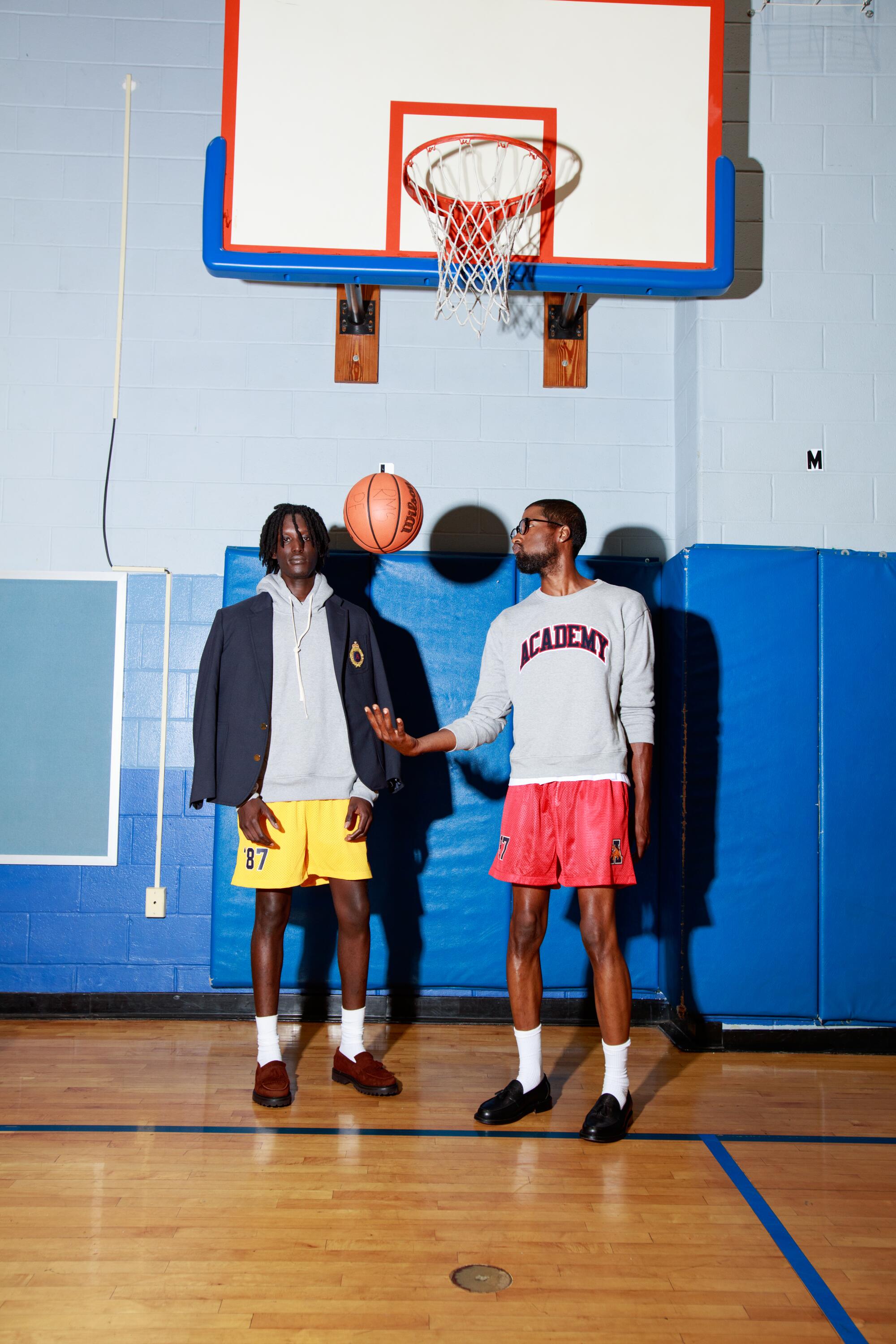
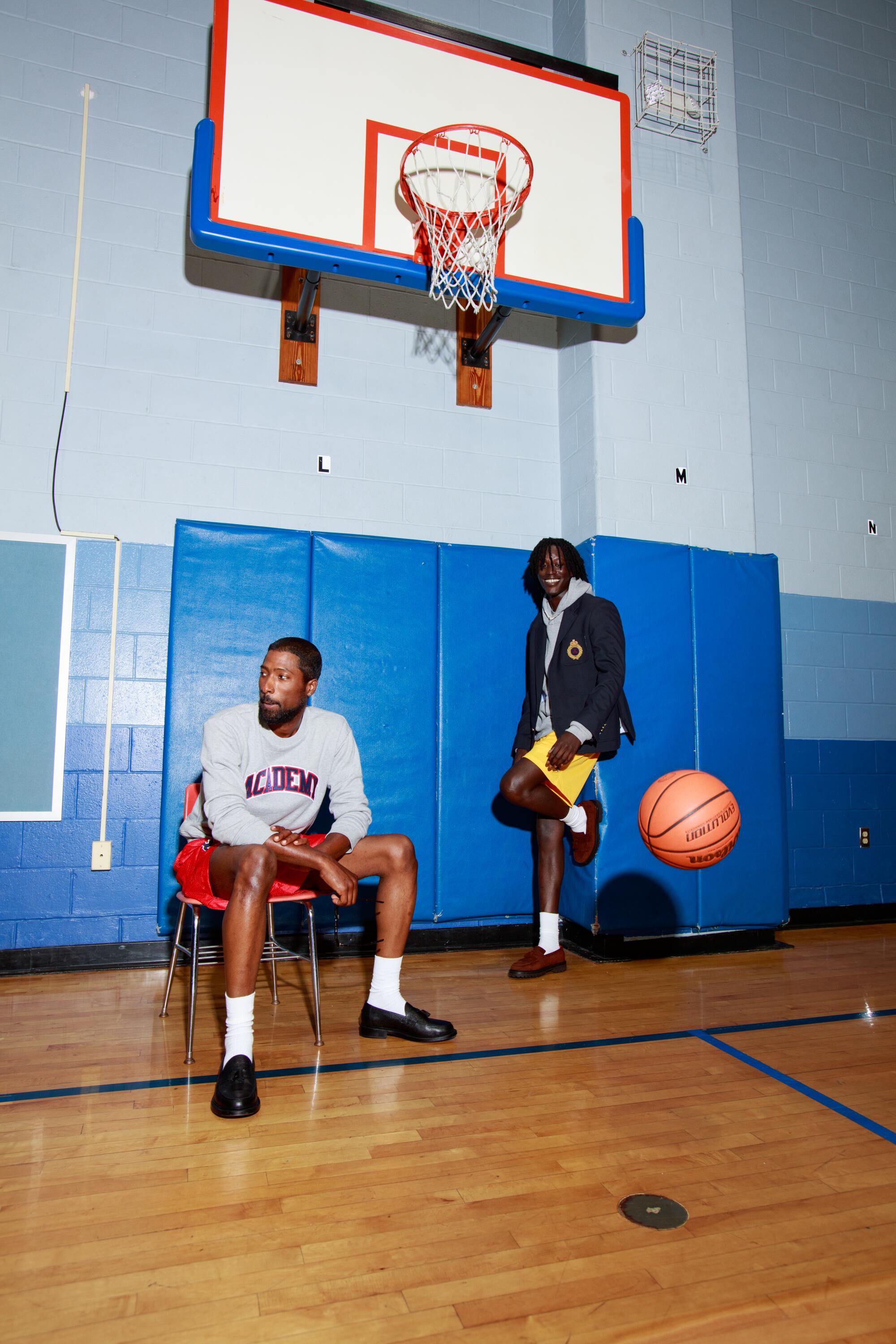
Jean-Christopher, left, wears Academy by Chris Echevarria Bookstore Crewneck in navy/red, PE Short in crimson, Clásico Tassel Loafer in onyx. Hella wears Academy by Chris Echevarria Away Game Hoodie, Schoolboy Blazer in navy, PE Short in canary, Kiltie Loafer Exclusively for Academy in chestnut.
Academy is, in a sense, backward-looking. The site’s About page boldly declares that the brand is “rooted in education and the lifelong pursuit of enrichment.” When you see the clothes, you can’t help but think about school — either your school or the imaginary preparatory academy (hence the name) from a movie like “Dead Poets Society.” It’s also about what happens after school, those youthful trips to the mall to comb through racks and racks of Gap or Banana Republic. Echevarria is clearly still communicating with that version of himself as he tells me about his mom taking him to the mall in his home state of New Jersey to start the long process of understanding what style meant to him. But he also sees that nostalgia as a trap that prevents personal growth. How much do you want to pine for “better days,” when maybe there was more under the surface of those “better days” than we want to admit?

The designer Chris Echevarria wears the Academy by Chris Echevarria Staff Varsity jacket in collaboration with Golden Bear and Brian Blakely, Max Pittion sunglasses, New Era hat.
Echevarria got his start in fashion by dropping out of the University of Maryland premed program. From there, he moved back to New York to make a go of his passion for getting dressed, first with a job at Kidrobot, then a spot at Parsons School of Design. But Parsons made its fashion students work through courses in womenswear before they even considered approaching men’s clothing. What set Echevarria off was a stint at the holy mecca of late-2000s menswear: the J. Crew Liquor Store in Lower Manhattan. Echevarria waxes lovingly about that time, when the Ludlow suit reigned supreme and razor-sharp, “Mad Men”-style tailoring was all the rage. He is, dare I say, a little nostalgic for the moment it all started to really click. “If I didn’t have those experiences, I probably wouldn’t be where I am.”
The Liquor Store heralded a new age of the man’s relationship to clothing — that it could be a lifelong pursuit: for creativity, joy and defiant self-expression. And it all happened with the classics of prep. “Now you had everything that you wanted as a man in one place, and you had people there that could speak to that specifically for you,” Echevarria says. “Before that, there wasn’t much [community].”
Echevarria networked with the heavy hitters and up-and-comers who would define the menswear scene in the years after. Brands like Billy Reid, Thom Browne and Scott Sternberg’s dearly departed Band of Outsiders remixed and reimagined the simplicity of menswear. “Band of Outsiders really showed me how fun this industry could be, just through the silhouettes, through the colors used, through the way that [Sternberg] pushed boundaries on design but still made it classic in a way that was ’80s and modern at the same time.”
Taking what he learned in the streets of SoHo, Echevarria in 2017 launched Blackstock & Weber, a line of forward-thinking loafers that hit just as menswear was having another go at prep. Guys who might have focused all their energy on Jordans now were copping shoes their dad might have worn, but with the bold twists that define everything Echevarria does — two-tones, chunky lug soles and cheetah print.
Academy, which launched last fall, is a natural extension of what Echevarria started with Blackstock & Weber. The familiar, but different. Chinos with pennants sewed across them nod to Ralph Lauren. There’s camo, which is so dialed into trends but also inspired by Japanese military style. Prep clothes are given a swagger that they don’t always have.
If this sounds like other brands you might be into, you’re not wrong. Your IG feed and your shopping cart are filled with brands touching American heritage fashion and injecting urban New York into it, but there’s one major difference that Echevarria articulates simply: “The difference between me and [other prep designers] is that I can say n—, and [they] can’t,” he says bluntly. “You can skate around these ideas, and you can be like, I was around, but did you really live it? You can talk about the things that me and my friends actually did on a daily basis and make caricatures about what our experience was and is. But at the end of the day, it’s just a caricature.”


Jean-Christopher wears Academy by Chris Echevarria Airport Fleece, Away Game Hoodie, Stash Short in camo, Ellis Penny Loafer in chocolate, Vibram 1757 Lug Sole. Hella wears Academy by Chris Echevarria Stash Pant in navy, Safari Jacket in navy, Kiltie Loafer exclusively for Academy in midnight.
That caricature he speaks about is typified by celebrity and brand lookbooks and IG culture that has come to dominate fashion, specifically menswear: the carefully curated props (cigars, half-eaten plates of pasta), allusions to old episodes of “Seinfeld” and any other ephemera that signal “New York” or “Black.” How does one define what is real? Who is the arbiter of truth? In some cases, it’s just a feeling. You see something and know that it came from a place of lived-in experience. The reality of Academy is that it comes from a Black kid from New Jersey and is informed by that life. It’s not a trend or a put-on.
What Echevarria hopes to do is speak to the diversity of not just his experience but the experience of straddling lines and living in multiple worlds as a Black man in America.
“I’ve done everything from live in the suburbs to live in an apartment with my mother and my grandmother to having cousins that lived in the projects and visiting them and sometimes even living with them,” he says. “I understand how all of these different strata exist within this world, and I understand how fashion is a form of expression through all of those strata. Especially as a person of color.”
As a biracial person myself, this hits home for me. It goes back to that first question. Whose American tradition are we pointing to? Whose story is this?
“What ends up happening as a person of color is that you kind of have to use these signals [of style and fashion], through the things that you decide to wear, through the way that you decide to present yourself — to show the other people in the room that you belong. And that is a unique experience to any person of color that grew up in America.”
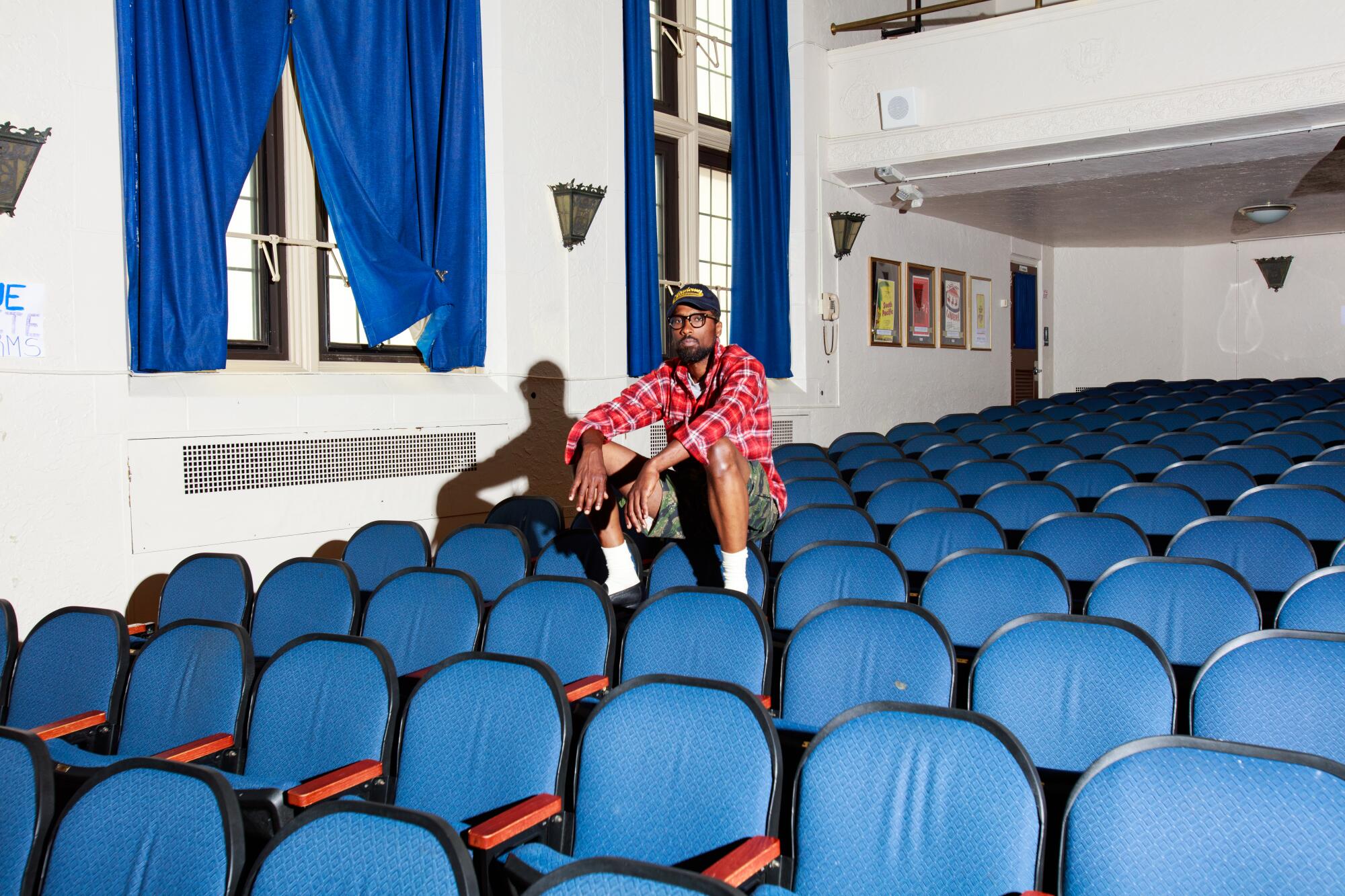
Jean-Christopher wears Academy by Chris Echevarria Talk Show Cap in navy, Over Shirt in red/blue, Stash Short in camo, Clásico Tassel Loafer in onyx.
By recontextualizing prep, Academy shows that “tradition” doesn’t have to mean exclusion. And that in an industry dominated by white people, a Black designer can thrive and make clothes that make “tradition” feel intensely personal. A blazer or a pair of loafers that can build a legacy.
Production Craft Alan, Jared Craft, Bella Lopez
Models Jean-Christopher Celestin, Hella Tall
Grooming Jennifer Gonzalez
Photo Assistant Josua Jiminez

-

 Ohio3 days ago
Ohio3 days agoOhio taxpayers sent families $966 million for private school tuition: Capitol Letter
-

 World1 week ago
World1 week agoEx-Catalan leader Puigdemont headed back to Spain despite fear of arrest
-
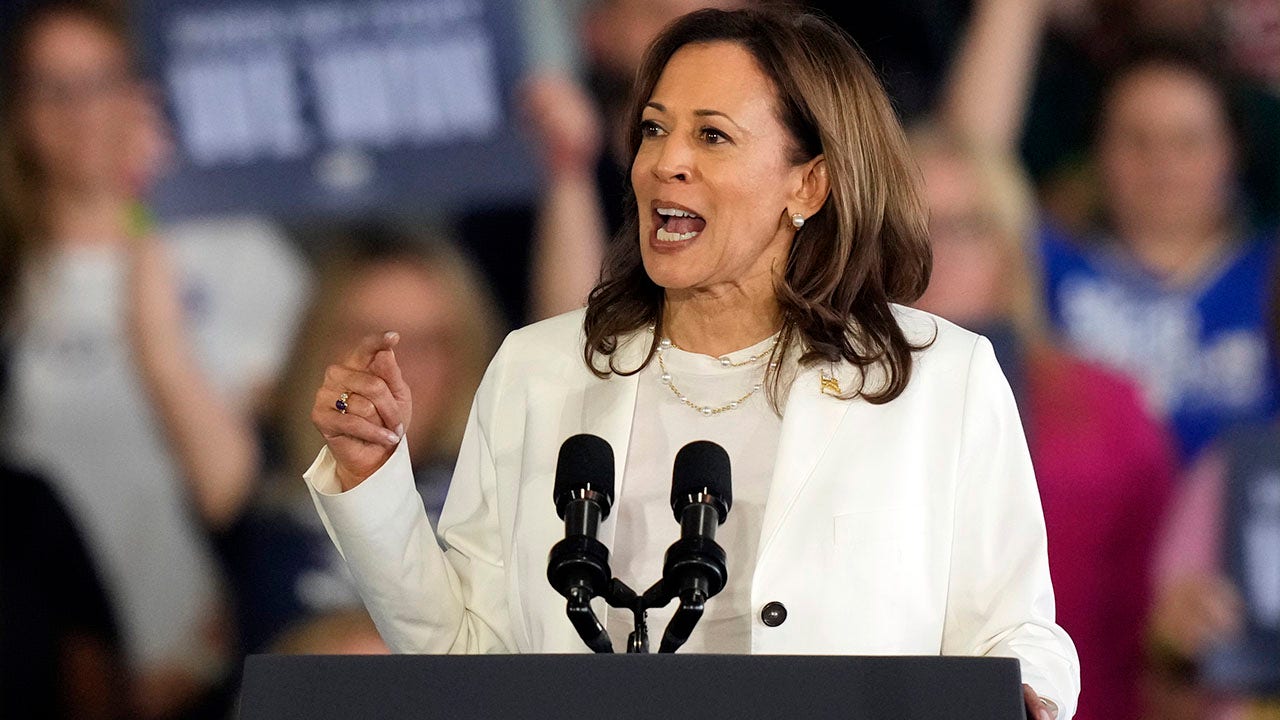
 Politics1 week ago
Politics1 week agoKamala Harris shuts down anti-Israel protesters during campaign speech in Michigan: 'I'm speaking'
-
Finance1 week ago
Why stocks tumbled today
-
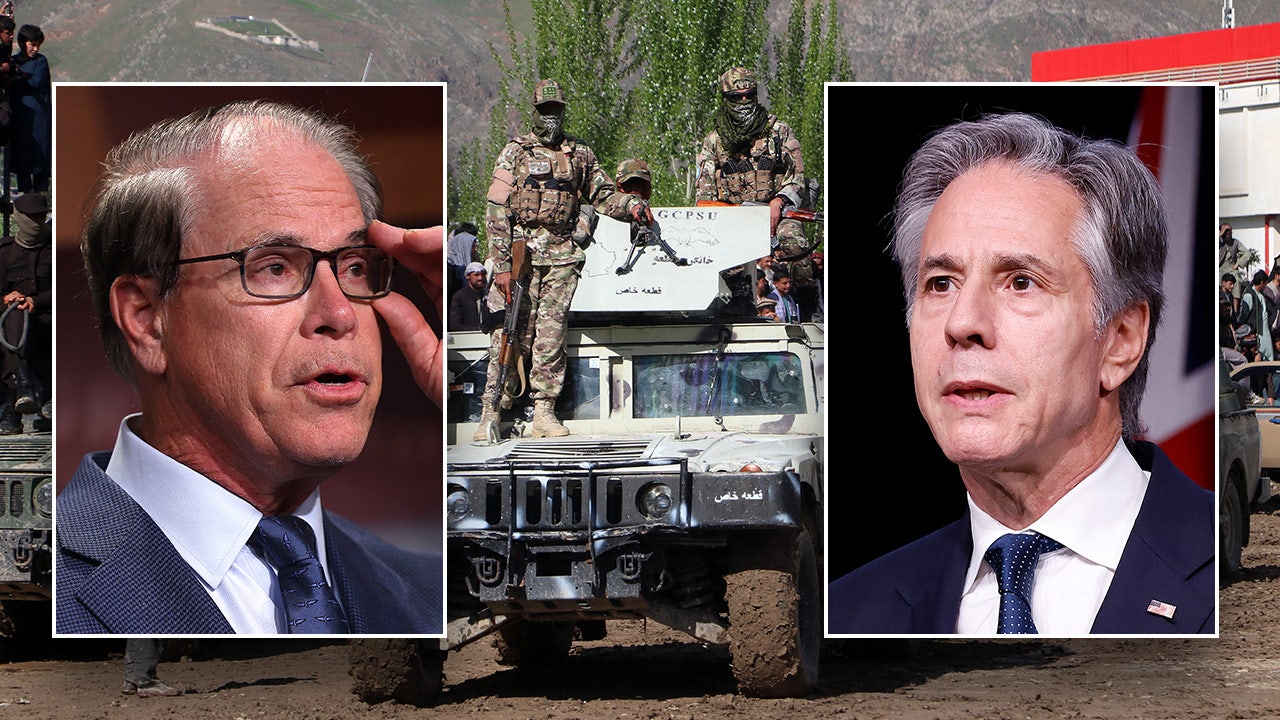
 Politics1 week ago
Politics1 week agoBlinken pressured to freeze Afghanistan aid after revelation nearly $300M could have gone to Taliban
-

 News1 week ago
News1 week agoMap: 5.2-Magnitude Earthquake Strikes Southern California
-
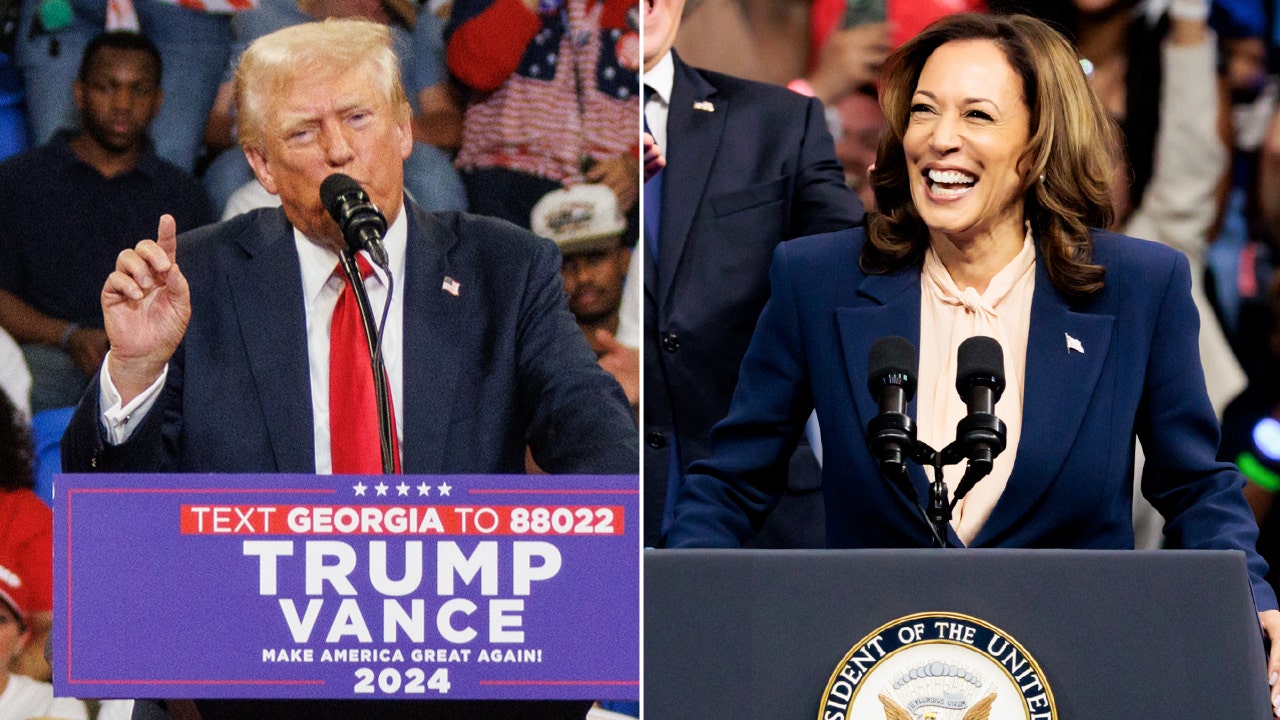
 Politics1 week ago
Politics1 week agoWith 30 days until voting starts, 'election season' kicks off sooner than you think
-
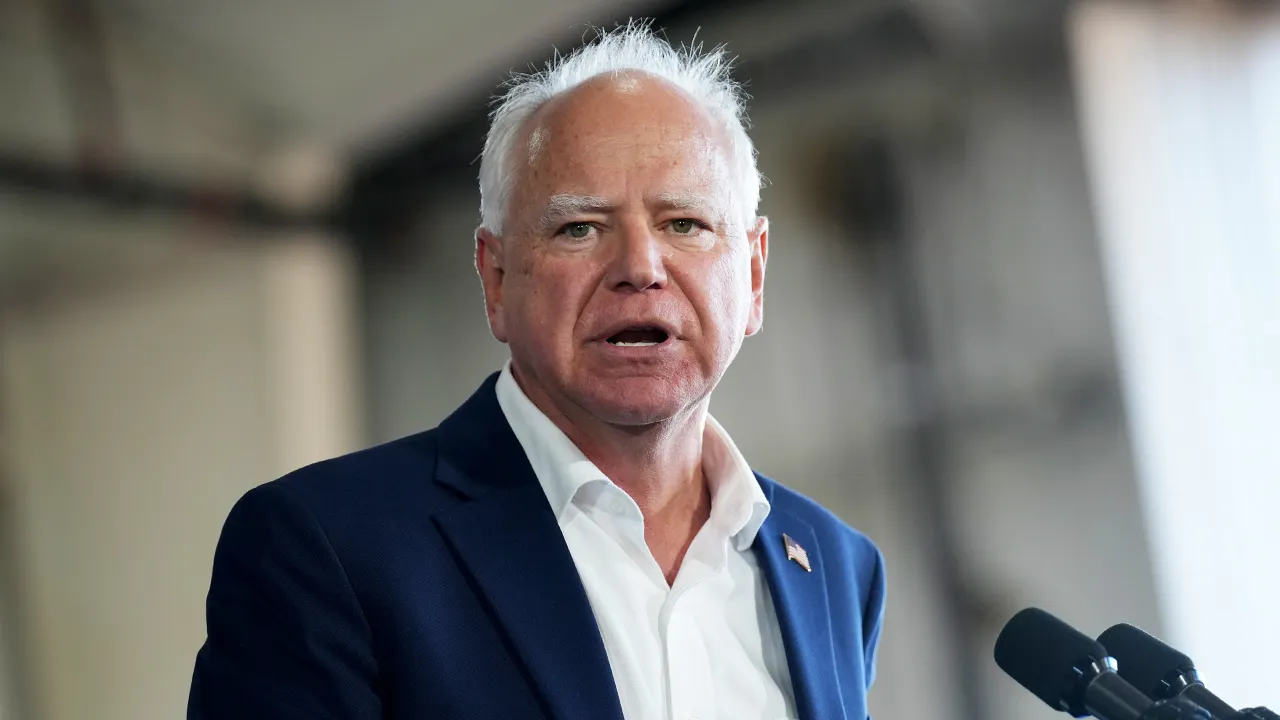
 Politics1 week ago
Politics1 week agoTim Walz 'misspoke' about using weapons ‘in war,' Harris campaign says: report












